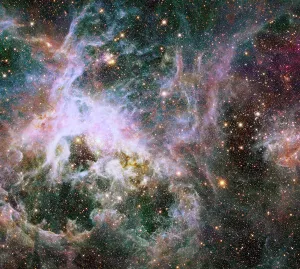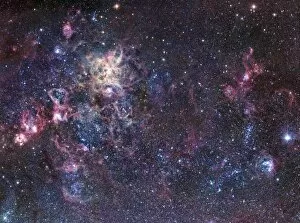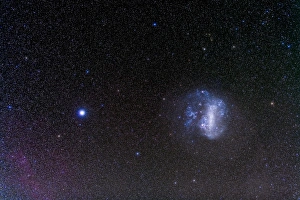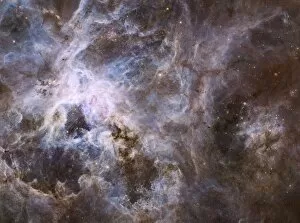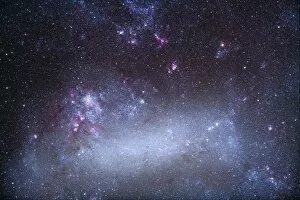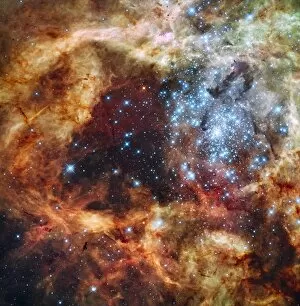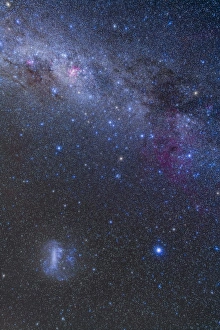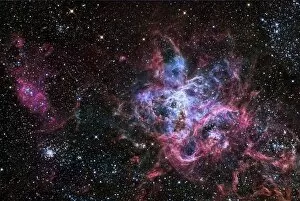30 Doradus Collection
"30 Doradus: Unveiling the Cosmic Symphony of Star Formation in the Tarantula Nebula" Behold the breathtaking beauty of 30 Doradus
All Professionally Made to Order for Quick Shipping
"30 Doradus: Unveiling the Cosmic Symphony of Star Formation in the Tarantula Nebula" Behold the breathtaking beauty of 30 Doradus, a celestial marvel nestled within the vast expanse of Astronomy's final frontier. This bright and ethereal cloud cover, located in the constellation of Dorado, holds within it a mesmerizing spectacle - the Tarantula Nebula. In this captivating composite image, witness the grandeur of The Large Magellanic Cloud and its radiant companion, Canopus. As your gaze widens to encompass this widefield view, you are transported into an exploration like no other. The Tarantula Nebula emerges as a stellar nursery known as R136 - a cradle for newborn stars that paint the heavens with their brilliance. Gazing upon this cosmic masterpiece from Canopus up to Carina Nebula reveals an awe-inspiring panorama across the southern sky and Milky Way. Within this tapestry lies our focal point - The Tarantula Nebula itself; a star-forming region that pulsates with life amidst its gossamer threads. As we delve deeper into its enigmatic depths, we discover that 30 Doradus is not just any nebulous entity but rather an astronomical wonder residing in The Large Magellanic Cloud. Its sheer magnitude leaves us spellbound as we contemplate its intricate dance between creation and destruction. The Tarantula Nebula stands proud as one of nature's most extraordinary phenomena – an ever-evolving testament to cosmic forces at play. It beckons us to ponder our place in this vast universe while igniting our curiosity about what lies beyond. So let us revel in awe-struck wonderment at 30 Doradus – where dreams take flight among swirling clouds and distant galaxies collide. Let it remind us that there is still so much left to explore on our journey through space and time.

